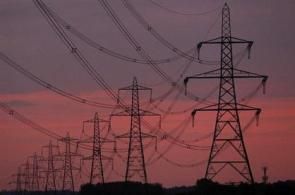 The country's narrowing power deficit and increased coal production may not be indicators of the end of stress in the industry. Amritha Pillay reports.
The country's narrowing power deficit and increased coal production may not be indicators of the end of stress in the industry. Amritha Pillay reports.
The country’s narrowing power deficit and increased coal production may not be indicators of the end of stress in the industry. There has been a negligible change in the power sector’s stressed capacity and debt.
According to data published by the Reserve Bank of India, the infrastructure sector’s share in gross non-performing assets of banks was 13.90 per cent in June 2016, higher than 12.69 per cent in December 2015, and the power sector’s contribution to these numbers was 5.97 per cent and 4.99 per cent, respectively.
“The primary reason for stressed assets in the power sector is weak demand. Demand has been weak due to muted industrial activity, resulting in ready capacity not finding long-term contracts, existing contracts running at low plant load factors and abysmally low spot power rates. Low asset utilisation is making it difficult for power producers to service debt,” said Debasish Mishra, partner at Deloitte Touche Tohmatsu India.
According to Central Electricity Authority data, the plant load factor in September nationwide was 58.13 per cent .
Legacy policy issues over coal allocation, low demand and banks’ unwillingness to take haircuts in acquisitions are some of the other reasons for the obstinate stressed debt in the system.
“Coal production has increased, but the distribution and usage policy continues to be restrictive. The delay in announcing a new policy framework is leading to uncertainty,” said Ashok Khurana, director-general, Association of Power Producers.
Khurana estimates the stressed power capacity at more than 50,000 MW, stating not much has changed in this number in the last couple of years. This capacity, Khurana said, lacked long-term power purchase agreements and fuel-supply agreements. “Around 18,000 MW faces under-recovery of fixed or variable costs due to various reasons and different stages of litigation,” he said.
Multiple data points suggest stressed debt in the sector may linger.
“Around 17,000 MW of projects, including those facing the consequences of aggressive bidding for coal supplies or huge cost overruns, and those with gas-supply issues, are projects where the debt at risk is the highest today. These are projects are not expected to turn viable in the long run even if they are structured under the 5:25 scheme or any other tool provided by the RBI,” said an October report by rating agency CRISIL.
CRISIL estimated the debt exposure to these projects at Rs 70,000 crore. The 17,000 MW was higher than the 16,000 MW the agency estimated as debt at risk in July 2015. However, the quantum of debt involved in these stressed capacities has fallen marginally from Rs 75,000 crore to Rs 70,000 crore.
“The debt situation will take time to resolve. One cannot undo the effects accumulated over the past five years with one year of better performance. The debt-earning ratio continues to remain high and balance sheets will take some time to deleverage,” said Vivek Jain, associate director with India Ratings.
The ability to service debt with operational cash flow for four of the seven main power producers in the country continues to remain under stress with an interest coverage ratio at below 1.5 times, Capitaline data shows.
Revival in demand is likely to be key in improving the debt quality and the debt servicing ability of power companies. However, a revival in demand may continue to elude the sector for some more time.
“Demand for power has not revived and I do not expect it to revive in the next year. Only after the debts of state electricity boards are transferred to the books of the state governments will demand improve,” said Anuj Upadhyay, analyst, Emkay Research.
G B S Raju, chairman, energy, GMR Group, is hopeful the situation will improve in 18 months. “Every plant in the sector has a different issue -- a long-term power purchase issue, a railway link issue, a transmission line issue -- and has found itself stranded. Problems are being addressed plant by plant. I expect things to improve in the next 18 months,” Raju said.












 © 2025
© 2025